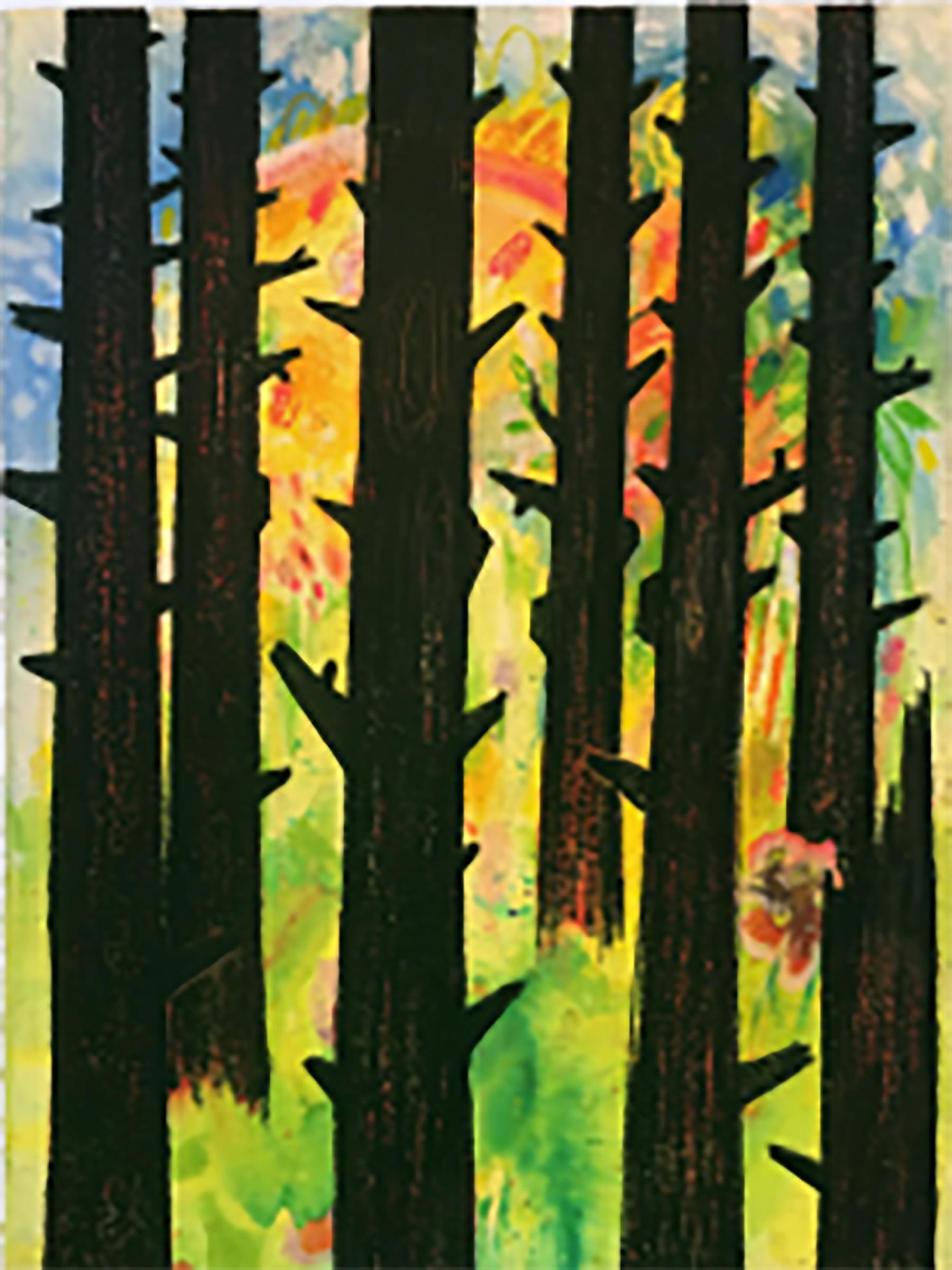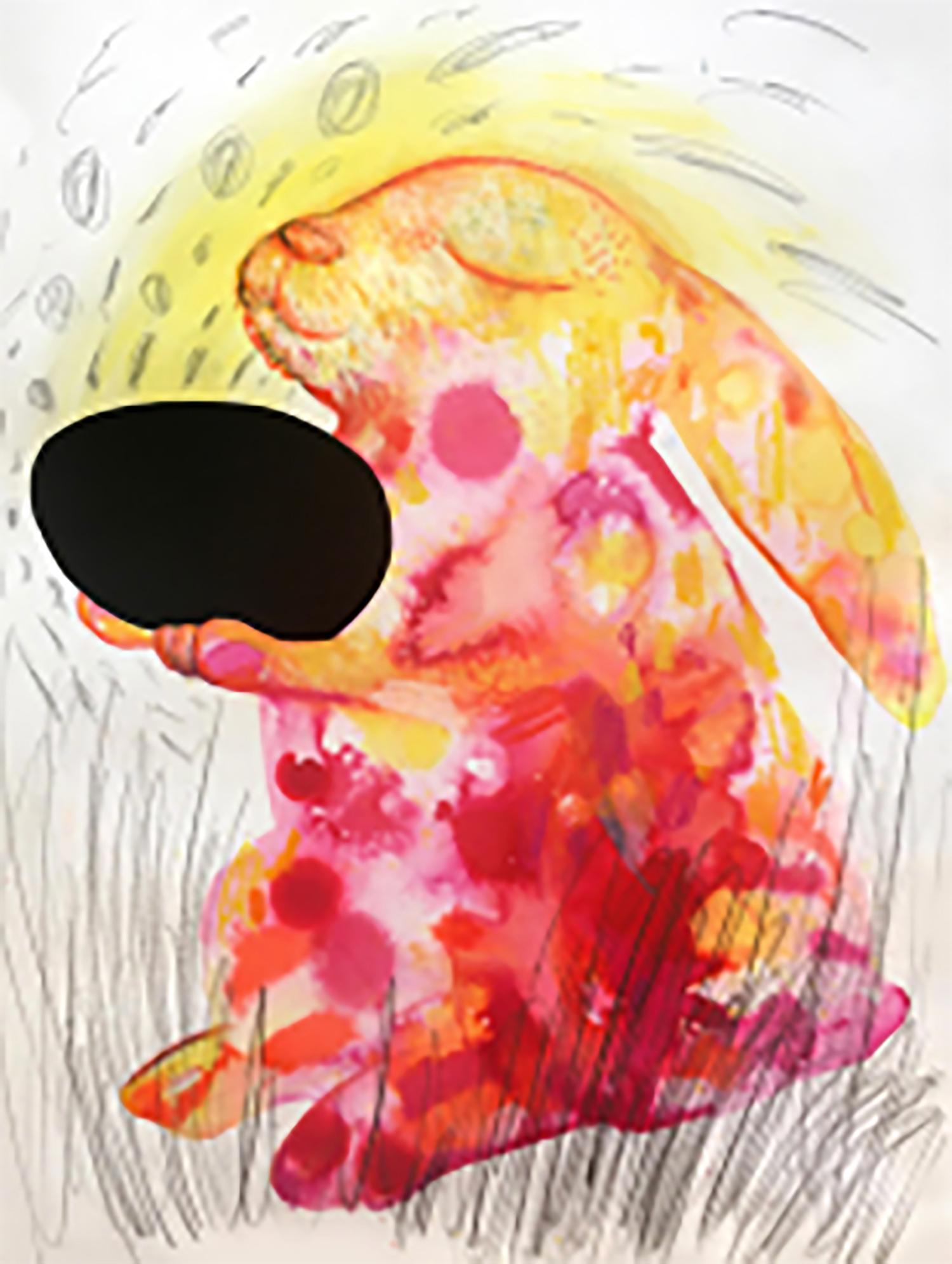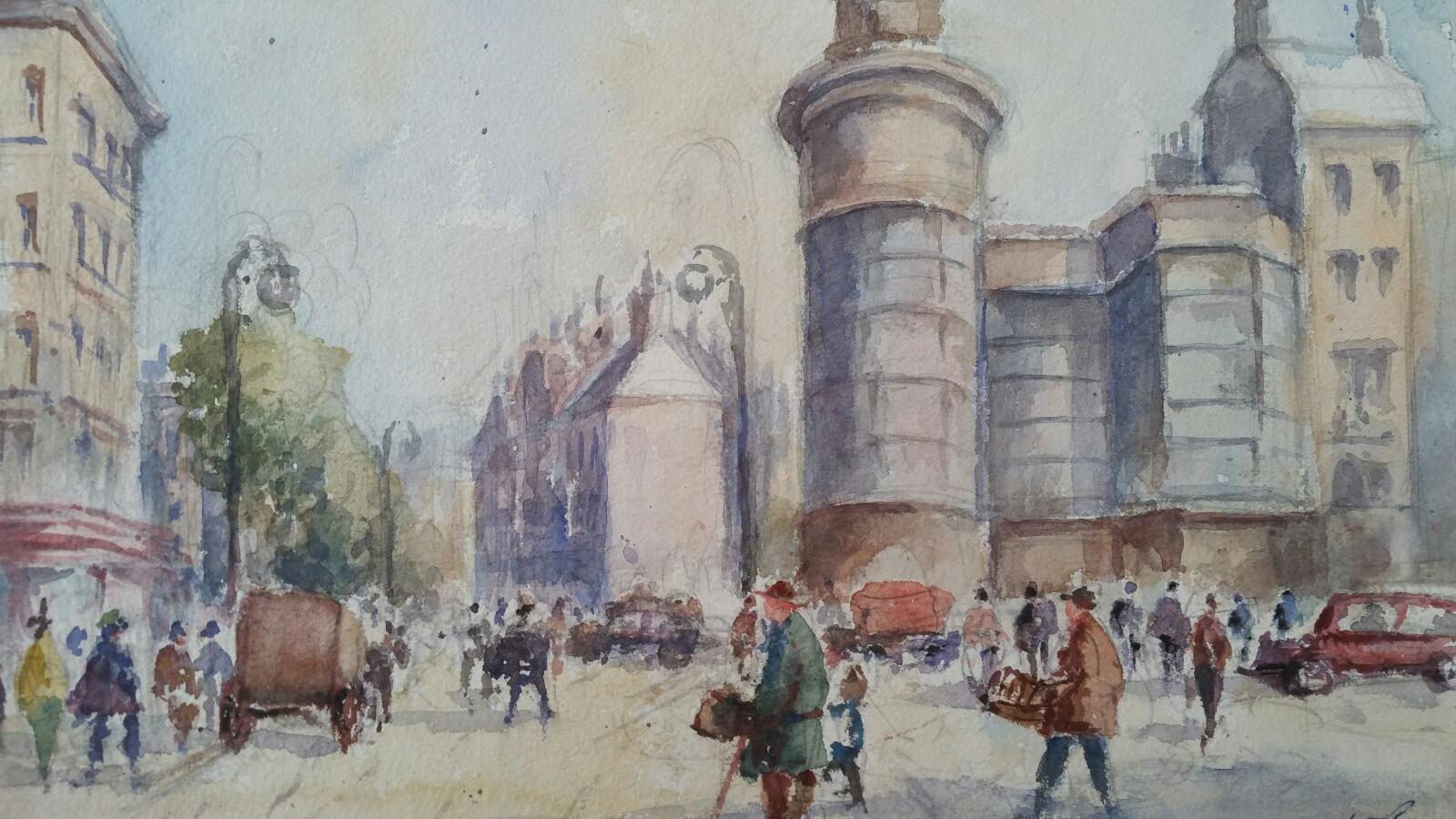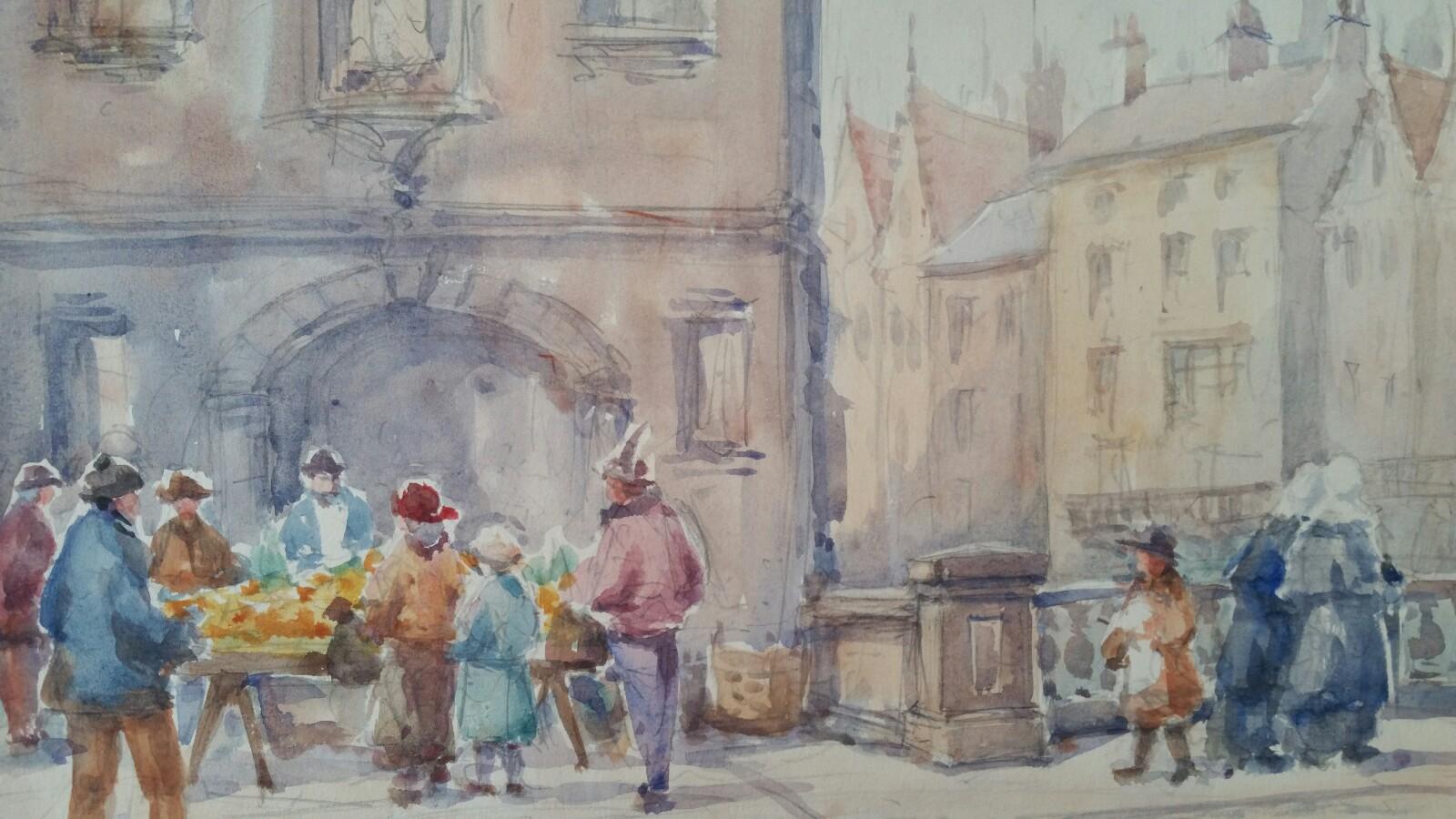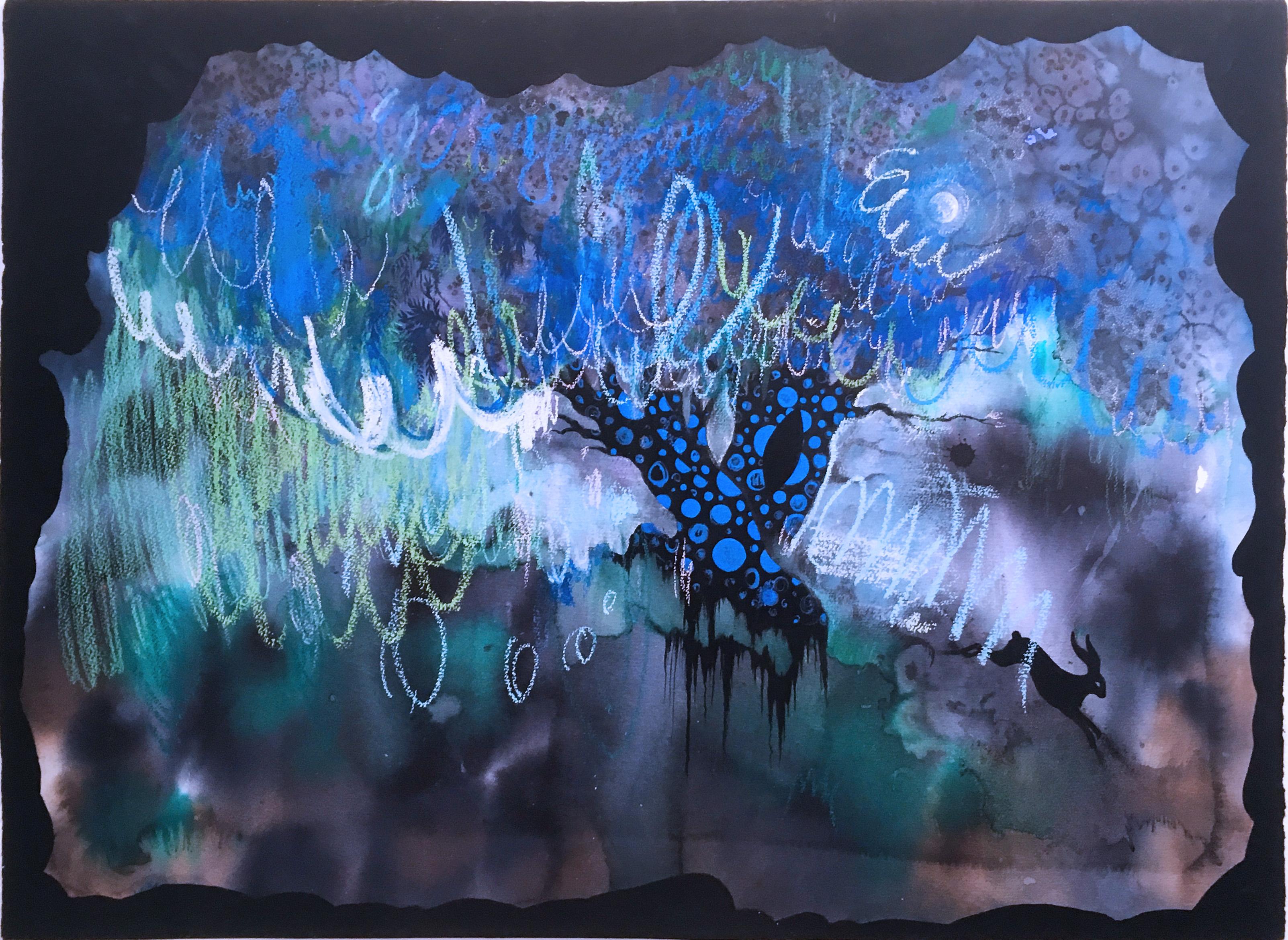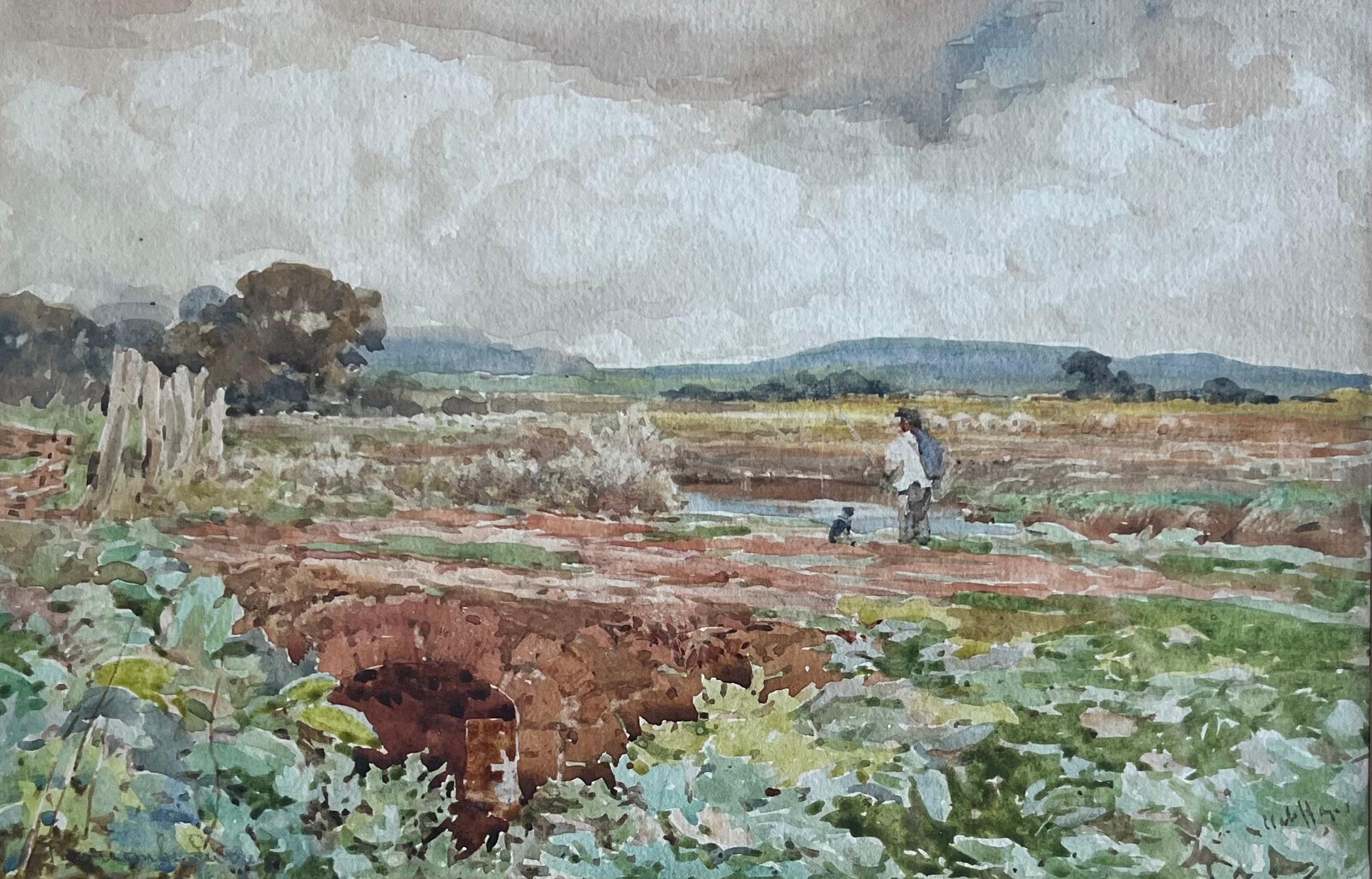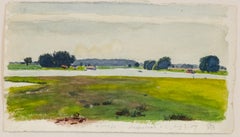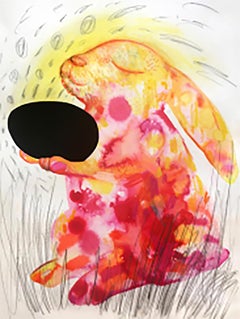
"Looking out the Window, West Point, Maine, " John Marin, Modernist Landscape
View Similar Items
Want more images or videos?
Request additional images or videos from the seller
1 of 7
John Marin"Looking out the Window, West Point, Maine, " John Marin, Modernist Landscape1914
1914
About the Item
- Creator:John Marin (1870-1953, American)
- Creation Year:1914
- Dimensions:Height: 23.5 in (59.69 cm)Width: 19.5 in (49.53 cm)
- Medium:
- Movement & Style:
- Period:
- Condition:
- Gallery Location:New York, NY
- Reference Number:1stDibs: LU1841211694732
About the Seller
5.0
Platinum Seller
These expertly vetted sellers are 1stDibs' most experienced sellers and are rated highest by our customers.
Established in 2021
1stDibs seller since 2022
60 sales on 1stDibs
Typical response time: 1 hour
More From This SellerView All
- "Tugboat at Dock, " Reginald Marsh, Modern WPA Industrial ShipBy Reginald MarshLocated in New York, NYReginald Marsh Tugboat at Dock, circa 1937 Signed lower right Watercolor and pencil on paper 13 3/4 x 20 inches Housed in a Lowy frame. Provenance: Sotheby'...Category
1930s Modern Landscape Paintings
MaterialsPaper, Watercolor, Pencil
- "Andes Mountains Peru South America, " Joseph Yoakum, Black Folk Art LandscapeBy Joseph YoakumLocated in New York, NYJoseph Yoakum Andes Mountains Peru So America, circa 1960s Colored pencil and ballpoint pen on paper 7 1/4 x 10 1/2 inches Provenance: Karen Lennox Gallery, Chicago Private Collection, South Dakota Yoakum began drawing in the early 1960s. Most of his work consists of radiantly colored landscapes with mountains, water, trees, and winding roads in abstract and complex configurations. his period of greatest activity — 1965 to 1970 — when he usually made one drawing a day. Yoakum maintained he had seen all the places represented in his drawings, a statement that may not be true in some instances. He traveled a great deal, beginning in his early teens when he ran away from home and became a circus handyman. Yoakum’s drawings can be considered memory images growing out of either actual or imagined experiences. All of his drawings have titles that grew longer and more specific over the years. He dated his works with a rubber stamp — an oddly impersonal, labor-saving device. Although Joseph Yoakum gave vastly different accounts of his background, he was, throughout his life, classified as an African American. Sometimes Yoakum claimed that he was a full-blooded “Nava-joe” Indian, one of twelve or thirteen children born to a farmer on an Indian reservation in Window Rock, Arizona. At other times he insisted that he was of African-American descent. He described his mother as a strong woman who was a doctor and knowledgeable in the use of herbal medicines. Yoakum’s family moved to Kansas City, Missouri, during his early childhood. His father was employed briefly in the railroad yards prior to settling permanently on a farm in nearby Walnut Grove...Category
1960s Folk Art Landscape Paintings
MaterialsPaper, Watercolor, Ballpoint Pen, Color Pencil
- "Sheepshead, Brooklyn, Long Island" Oscar Bluemner, Modernist WatercolorBy Oscar BluemnerLocated in New York, NYOscar Bluemner Sheepshead, Long Island, 1907 Signed with the artist's conjoined initials "OB" and dated "4-30 - 5 - 30" / "Aug 3, 07" Watercolor on paper 6 x 10 inches Provenance: J...Category
Early 1900s American Modern Landscape Drawings and Watercolors
MaterialsPaper, Watercolor
- "New York City Skyline View from the East River, " Lionel Reiss, Jewish ArtistBy Lionel ReissLocated in New York, NYLionel S. Reiss (1894 - 1988) New York City Skyline View from the East River Watercolor on paper 13 x 19 inches Signed lower left In describing his own style, Lionel Reiss wrote, “By nature, inclination, and training, I have long since recognized the fact that...I belong to the category of those who can only gladly affirm the reality of the world I live in.” Reiss’s subject matter was wide-ranging, including gritty New York scenes, landscapes of bucolic Bucks County, Pennsylvania, and seascapes around Gloucester, Massachusetts. However, it was as a painter of Jewish life—both in Israel and in Europe before World War II—that Reiss excelled. I.B. Singer, the Nobel Prize winner for Literature, noted that Reiss was “essentially an artist of the nineteenth century, and because of this he had the power and the courage to tell visually the story of a people.” Although Reiss was born in Jaroslaw, Poland, his family immigrated to the United States in 1898 when he was four years old. Reiss's family settled on New York City’s Lower East Side and he lived in the city for most of his life. Reiss attended the Art Students League and then worked as a commercial artist for newspapers and publishers. As art director for Metro-Goldwyn-Mayer, he supposedly created the studio’s famous lion logo. After World War I, Reiss became fascinated with Jewish life in the ‘Old World.’ In 1921 he left his advertising work and spent the next ten years traveling in Europe, the Middle East, and North Africa. Like noted Jewish photographers Alter Kacyzne and Roman Vishniac, Reiss depicted Jewish life in Poland prior to World War II. He later wrote, “My trip encompassed three main objectives: to make ethnic studies of Jewish types wherever I traveled; to paint and draw Jewish life, as I saw it and felt it, in all aspects; and to round out my work in Israel.” In Europe, Reiss recorded quotidian scenes in a variety of media and different settings such as Paris, Amsterdam, the Venice ghetto, the Jewish cemetery in Prague, and an array of shops, synagogues, streets, and marketplaces in the Jewish quarters of Warsaw, Lodz, Krakow, Lublin, Vilna, Ternopil, and Kovno. He paid great attention to details of dress, hair, and facial features, and his work became noted for its descriptive quality. A selection of Reiss’s portraits appeared in 1938 in his book My Models Were Jews. In this book, published on the eve of the Holocaust, Reiss argued that there was “no such thing as a ‘Jewish race’.” Instead, he claimed that the Jewish people were a cultural group with a great deal of diversity within and between Jewish communities around the world. Franz Boas...Category
1940s American Modern Landscape Drawings and Watercolors
MaterialsPaper, Watercolor
$2,800 Sale Price20% Off - "New England Landscape with Barns, " Andrew Nathaniel Wyeth, American ArtLocated in New York, NYAndrew Nathaniel Wyeth (American, b. 1948) New England Landscape with Barns, 1974 Watercolor and pencil on Bainbridge watercolor board 20 x 30 i...Category
1970s Landscape Drawings and Watercolors
MaterialsPencil, Board, Watercolor
- "Train Station, " Max Kuehne, Industrial City Scene, American ImpressionismBy Max KuehneLocated in New York, NYMax Kuehne (1880 - 1968) Train Station, circa 1910 Watercolor on paper 8 1/4 x 10 1/4 inches Signed lower right Provenance: Private Collection, Illinois Max Kuehne was born in Halle, Germany on November 7, 1880. During his adolescence the family immigrated to America and settled in Flushing, New York. As a young man, Max was active in rowing events, bicycle racing, swimming and sailing. After experimenting with various occupations, Kuehne decided to study art, which led him to William Merritt Chase's famous school in New York; he was trained by Chase himself, then by Kenneth Hayes Miller. Chase was at the peak of his career, and his portraits were especially in demand. Kuehne would have profited from Chase's invaluable lessons in technique, as well as his inspirational personality. Miller, only four years older than Kuehne, was another of the many artists to benefit from Chase's teachings. Even though Miller still would have been under the spell of Chase upon Kuehne's arrival, he was already experimenting with an aestheticism that went beyond Chase's realism and virtuosity of the brush. Later Miller developed a style dependent upon volumetric figures that recall Italian Renaissance prototypes. Kuehne moved from Miller to Robert Henri in 1909. Rockwell Kent, who also studied under Chase, Miller, and Henri, expressed what he felt were their respective contributions: "As Chase had taught us to use our eyes, and Henri to enlist our hearts, Miller called on us to use our heads." (Rockwell Kent, It's Me O Lord: The Autobiography of Rockwell Kent. New York: Dodd, Mead and Co., 1955, p. 83). Henri prompted Kuehne to search out the unvarnished realities of urban living; a notable portion of Henri's stylistic formula was incorporated into his work. Having received such a thorough foundation in art, Kuehne spent a year in Europe's major art museums to study techniques of the old masters. His son Richard named Ernest Lawson as one of Max Kuehne's European traveling companions. In 1911 Kuehne moved to New York where he maintained a studio and painted everyday scenes around him, using the rather Manet-like, dark palette of Henri. A trip to Gloucester during the following summer engendered a brighter palette. In the words of Gallatin (1924, p. 60), during that summer Kuehne "executed some of his most successful pictures, paintings full of sunlight . . . revealing the fact that he was becoming a colorist of considerable distinction." Kuehne was away in England the year of the Armory Show (1913), where he worked on powerful, painterly seascapes on the rocky shores of Cornwall. Possibly inspired by Henri - who had discovered Madrid in 1900 then took classes there in 1906, 1908 and 1912 - Kuehne visited Spain in 1914; in all, he would spend three years there, maintaining a studio in Granada. He developed his own impressionism and a greater simplicity while in Spain, under the influence of the brilliant Mediterranean light. George Bellows convinced Kuehne to spend the summer of 1919 in Rockport, Maine (near Camden). The influence of Bellows was more than casual; he would have intensified Kuehne's commitment to paint life "in the raw" around him. After another brief trip to Spain in 1920, Kuehne went to the other Rockport (Cape Ann, Massachusetts) where he was accepted as a member of the vigorous art colony, spearheaded by Aldro T. Hibbard. Rockport's picturesque ambiance fulfilled the needs of an artist-sailor: as a writer in the Gloucester Daily Times explained, "Max Kuehne came to Rockport to paint, but he stayed to sail." The 1920s was a boom decade for Cape Ann, as it was for the rest of the nation. Kuehne's studio in Rockport was formerly occupied by Jonas Lie. Kuehne spent the summer of 1923 in Paris, where in July, André Breton started a brawl as the curtain went up on a play by his rival Tristan Tzara; the event signified the demise of the Dada movement. Kuehne could not relate to this avant-garde art but was apparently influenced by more traditional painters — the Fauves, Nabis, and painters such as Bonnard. Gallatin perceived a looser handling and more brilliant color in the pictures Kuehne brought back to the States in the fall. In 1926, Kuehne won the First Honorable Mention at the Carnegie Institute, and he re-exhibited there, for example, in 1937 (Before the Wind). Besides painting, Kuehne did sculpture, decorative screens, and furniture work with carved and gilded molding. In addition, he designed and carved his own frames, and John Taylor Adams encouraged Kuehne to execute etchings. Through his talents in all these media he was able to survive the Depression, and during the 1940s and 1950s these activities almost eclipsed his easel painting. In later years, Kuehne's landscapes and still-lifes show the influence of Cézanne and Bonnard, and his style changed radically. Max Kuehne died in 1968. He exhibited his work at the National Academy of Design, the Art Institute of Chicago, the Carnegie Institute in Pittsburgh, the Memorial Art Gallery of the University of Rochester, and in various New York City galleries. Kuehne's works are in the following public collections: the Detroit Institute of Arts (Marine Headland), the Whitney Museum (Diamond Hill...Category
1910s American Impressionist Landscape Drawings and Watercolors
MaterialsPaper, Watercolor
You May Also Like
- Hopeful Spring, 2020, watercolor, oil pastel, green, landscape, fantasy, treesBy Shamona StokesLocated in Jersey City, NJHopeful Spring, 2020, watercolor, oil pastel, green, landscape, fantasy, trees.Category
2010s Contemporary Landscape Paintings
MaterialsPaper, Oil Pastel, Ink, Acrylic, Watercolor, Color Pencil, Graphite
- Anthemusa, 2020, watercolor, oil pastel, green, landscape, ink, fantasy, blueBy Shamona StokesLocated in Jersey City, NJAnthemusa, 2020, watercolor, oil pastel, green, landscape, ink, fantasy.Category
2010s Contemporary Landscape Paintings
MaterialsOil Pastel, Ink, Acrylic, Watercolor, Color Pencil, Graphite, Paper
- Gift, 2020, watercolor, oil pastel, pink, orange, rabbit, ink, fantasyBy Shamona StokesLocated in Jersey City, NJGift, 2020, watercolor, oil pastel, pink, orange, ink, fantasy, rabbit.Category
2010s Contemporary Landscape Paintings
MaterialsPaper, Oil Pastel, Ink, Watercolor, Graphite
- Mid 20th Century, Wales, Caernarfon CastleBy Leonard Machin RoweLocated in Cirencester, GloucestershireWales: Caernarfon Castle by Leonard Machin Rowe (1880-1968) signed front lower right, inscribed and signed to the back watercolour painting on artist's paper, unframed Image 9.5 ...Category
1950s Impressionist Landscape Paintings
MaterialsGraphite, Watercolor
- Mid 20th Century, Belgium, A Brussels Street SceneBy Leonard Machin RoweLocated in Cirencester, GloucestershireBelgium. Brussels - A Street Scene by Leonard Machin Rowe (1880-1968) signed front lower right corner, inscribed, dated and signed to the back watercolour painting on artist's paper,...Category
1950s Impressionist Landscape Paintings
MaterialsWatercolor, Graphite
- Mid 20th Century, Belgium, A Gent Morning MarketBy Leonard Machin RoweLocated in Cirencester, GloucestershireBelgium. Gent - A Morning Market by Leonard Machin Rowe (1880-1968) signed and inscribed front lower right corner, inscribed and signed to the back watercolour painting on artist's ...Category
1950s Impressionist Landscape Paintings
MaterialsGraphite, Watercolor

